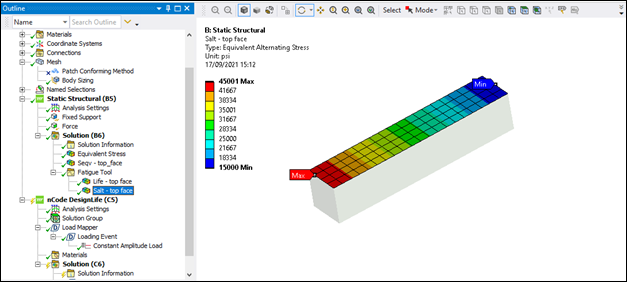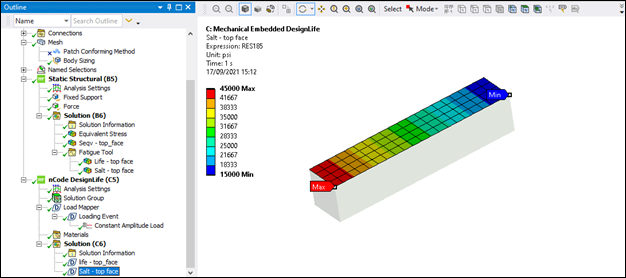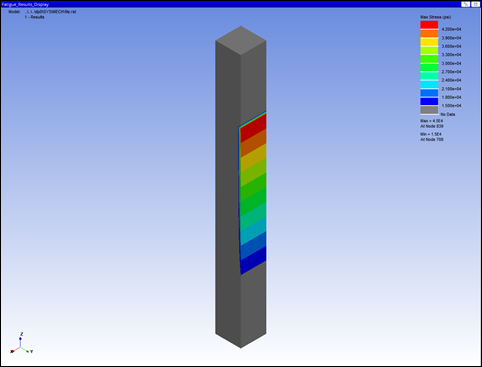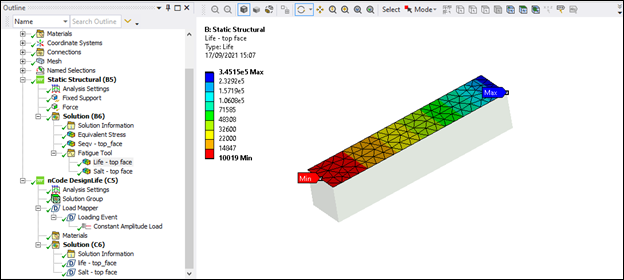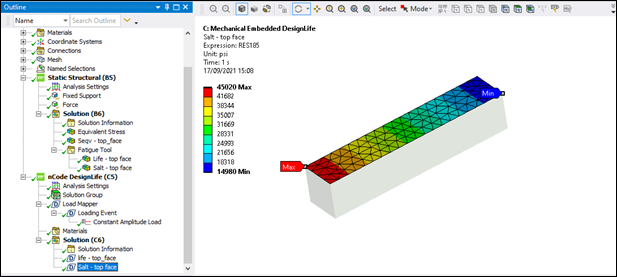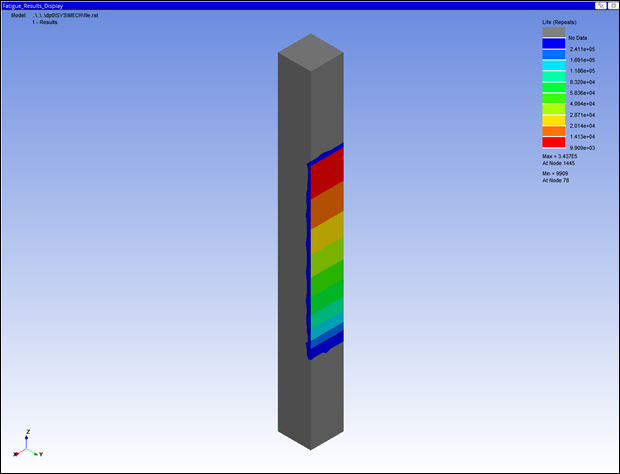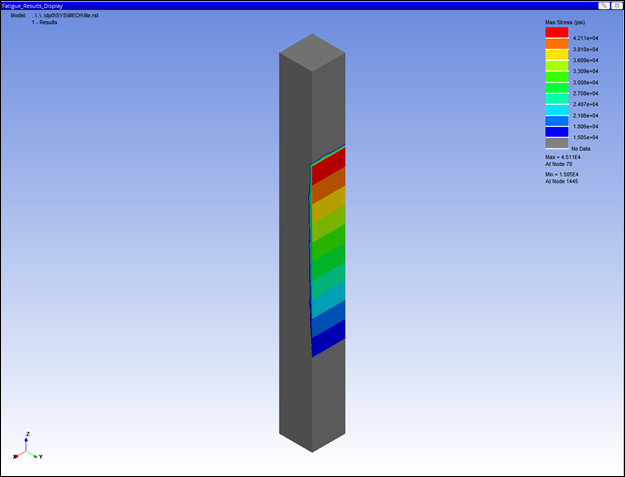The calculated fatigue results using the DesignLife Add-on can differ from those calculated using the integrated/standalone Ansys nCode DesignLife interface, because the nodal stresses may differ.
The integrated/standalone DesignLife interface calculates the surface nodal stresses by averaging the stresses from all elements that share that node. However, the DesignLife Add-on only includes the stresses from elements that have a face on the surface. The nodal stress averaging method used by the DesignLife Add-on is consistent with the method used by Mechanical. For refined, well-shaped meshes, the effect of the nodal stress averaging method should be minimal. The effect can be more substantial for poor quality meshes, particularly those with tetrahedral elements.
Differences caused by stress averaging
The DesignLife Add-on and the integrated/standalone Ansys nCode DesignLife interfaces use the same fatigue solver. If the settings and nodal stresses are identical, the calculated fatigue results will be identical. However, the different interfaces use different stress averaging algorithms which can produce different nodal stresses which will then produce different fatigue results.
This simple test case demonstrates the issue with stress averaging methods. It is a simple cantilever beam. The nodes in the center portion of the top face are saved in a Named Selection (top_face). The fatigue calculations use the SN method, fully reversing Constant Amplitude loading, and the signed VonMises stress. You can create a hex or tet mesh by suppressing/un-suppressing the mesh method.
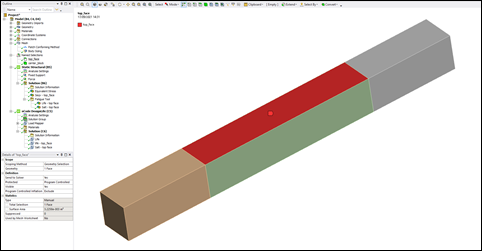
Hex Mesh
If a hex mesh is used, the maximum calculated alternating stress in the top_face is 45 ksi for the add-on, the integrated/standalone interfaces, and the Mechanical Fatigue Tool (FT). The minimum calculated fatigue life is 9999 cycles for all interfaces.
Tet Mesh
If a tet mesh is used, the maximum calculated alternating stress is 45.02 ksi for the add-on, 45.11 ksi for the integrated/standalone interfaces, and 44.97 ksi for the FT. The minimum calculated fatigue life is 9982 for the add-on, 9909 for the integrated/standalone interface, and 10019 for the FT. The interfaces produce different fatigue results because they calculate slightly different nodal stresses.
Conclusion
For surface stresses, the integrated/standalone DesignLife interface calculates the nodal stress by averaging the stress from all elements that share that node. This averaging scheme is similar to the averaging scheme used by Mechanical APDL Full graphics. However, the add-on interface only averages the stress from elements that have a face on that surface. This averaging scheme is similar to the averaging schemes used by Mechanical APDL Power graphics and Mechanical.
For a refined, well-shaped mesh using hex elements, the averaged surface nodal stresses should be almost identical regardless of the averaging scheme. Thus, for those types of meshes, the calculated DesignLife fatigue results from the add-on and the integrated/standalone interface (and the FT) should be almost identical. However, for coarse tet meshes, the averaged nodal stresses can be affected by the averaging scheme. Thus, the calculated fatigue results may be different.
In meshes where the averaging scheme affects the nodal stresses (and therefore the fatigue results), you can expect the add-on results to be more accurate than the integrated/standalone results. However, a large difference in the fatigue results between the add-on and the integrated/standalone interfaces would indicate a poor quality mesh.




